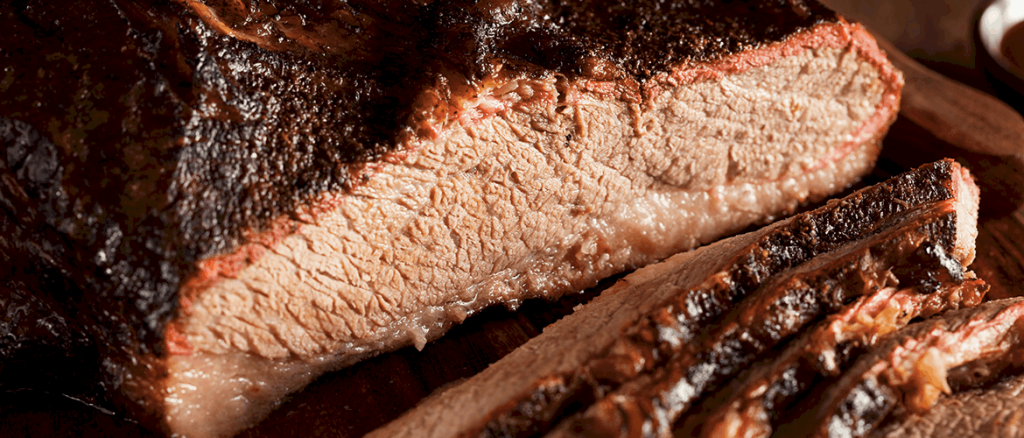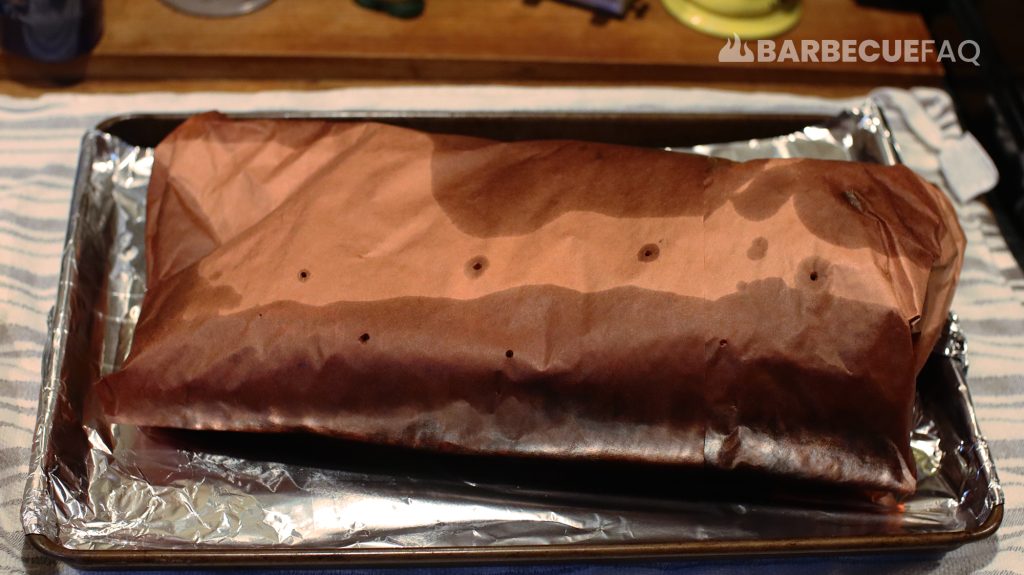The general recommendation is to point the fat cap at the heat source as the fat is rendered better.
| Type of Smoker | Fat Cap Up or Down or Flipped |
|---|---|
| Offset smoker (standard and reverse flow) | Fat Cap Up |
| Weber Smokey Mountain (WSM) as well as most water smokers | Fat Cap Down |
| Pellet Smoker | Flipped |
| Weber Kettle | Up |
| Electric Smokers | Down |
| Gas Smokers | Down |
| Gas Grill | Down |
| Drum Smokers | Down |
Note: This table isn’t all encompassing. I did my best to list the most common types of smokers and cookers used.
Brisket Fat Side Up or Down?
There are three main opinions:
- Fat Side Up or,
- Fat Side Down or,
- Flipped
All of these are based on your smoker.
Say you’re following a recipe online for smoking brisket.
If the person owns an offset smoker or a weber kettle, they’ll likely tell you to put the meat on the smoker fat side UP.
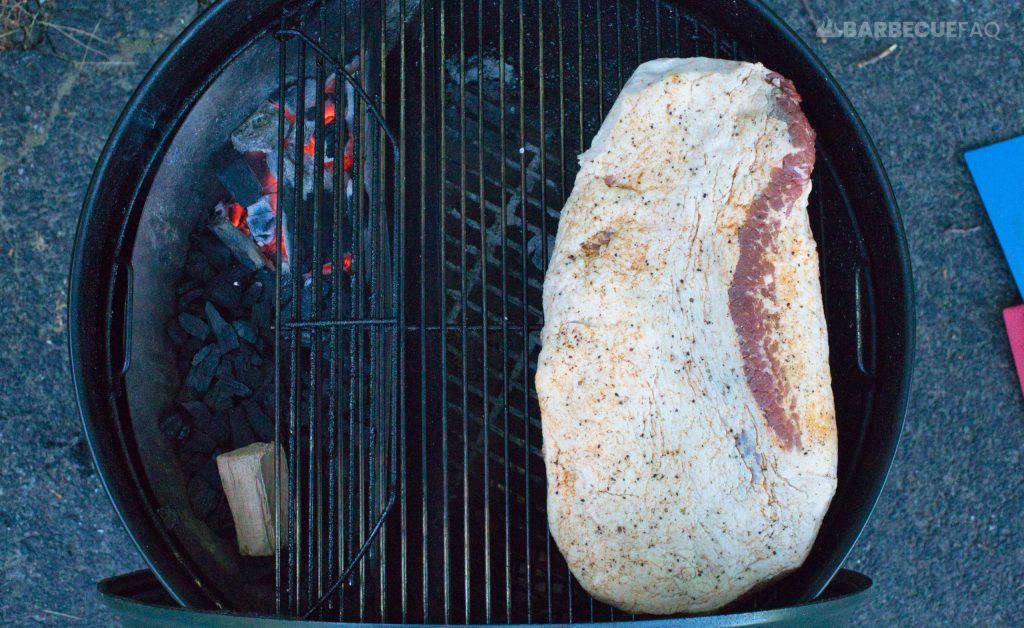
What they fail to tell you is that they’re doing this because the heat is coming from the top.
They also likely put the point end towards the firebox.
BUT if you own a Barrel cooker you’d want to put the fat side DOWN because there is radiant heat from the bottom.
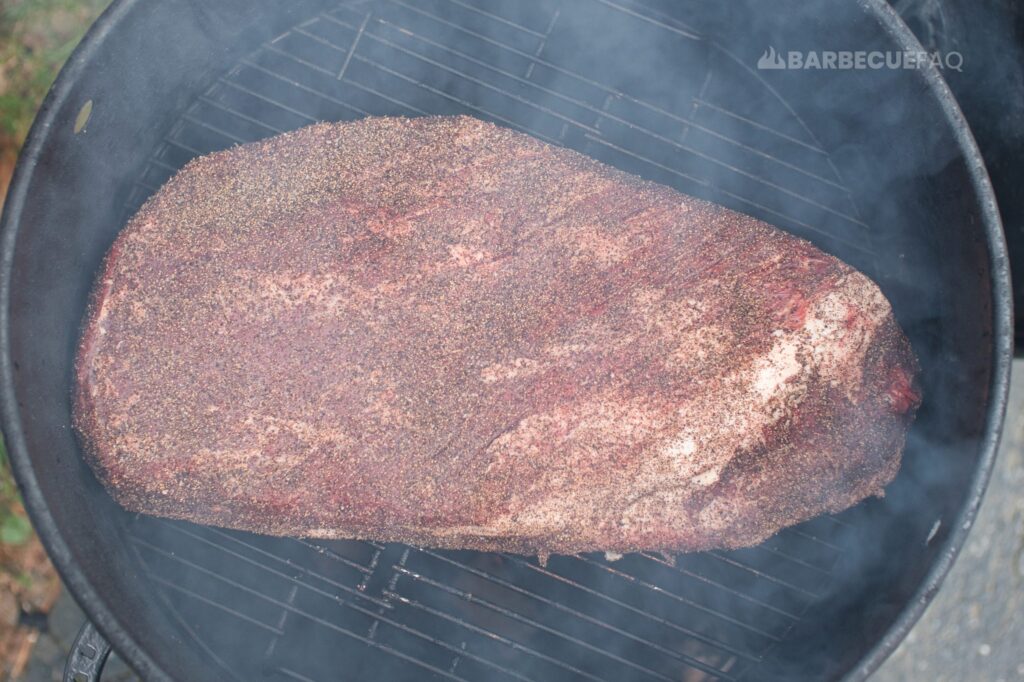
BUT If you own a pellet smoker, you may start smoking fat cap UP due to the radiant heat from the firepot, and then you’d FLIP the meat after a period of time or fat side DOWN.
This way, your bark is set on the flat and it won’t wash away as the moisture is pushed out and the fat renders.
The general flow of heat inside a pellet smoker is pictured below:
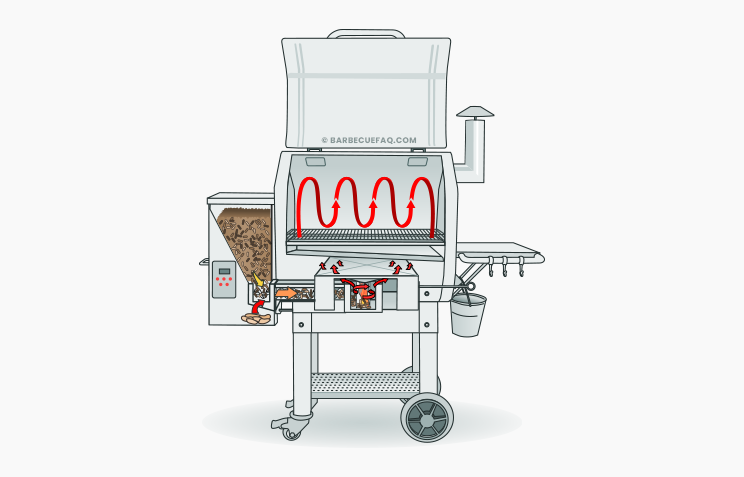
Does Smoking Fat Side Up Add Moisture to the Meat?
I remember when I first got started smoking brisket, I saw on barbecue forums a number of people said to do fat side up because it provides “moisture” to the meat.
They’re basically saying, as the fat starts to render it will penetrate the meat via gravity.
That doesn’t make sense.
I remember in 5th grade my Teacher combined cooking oil and water in a glass.
The cooking oil and the water never combined because fats are non-polar and water is polar.
Meaning, this idea that somehow the rendered fat could penetrate the lean meat (which is primarily water) makes no sense.
Can the Fat Braise or Confit the Meat?
To some extent, yes.
A popular method that is used now is the “foil boat” – which exposes the fat cap and cooks the brisket in residual fat and water.
The collected meat juices will then braise (slow cook in a liquid) or confit (slow cook in a fat) the meat side of the brisket.



